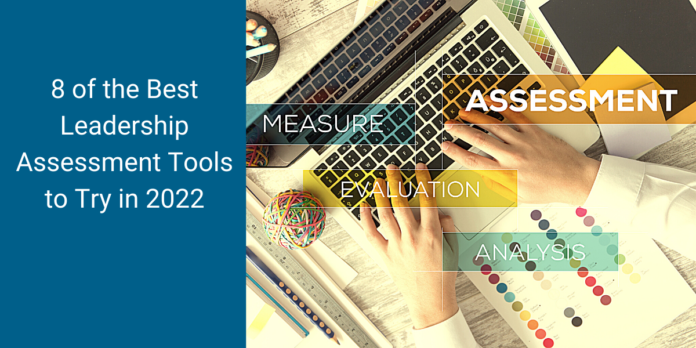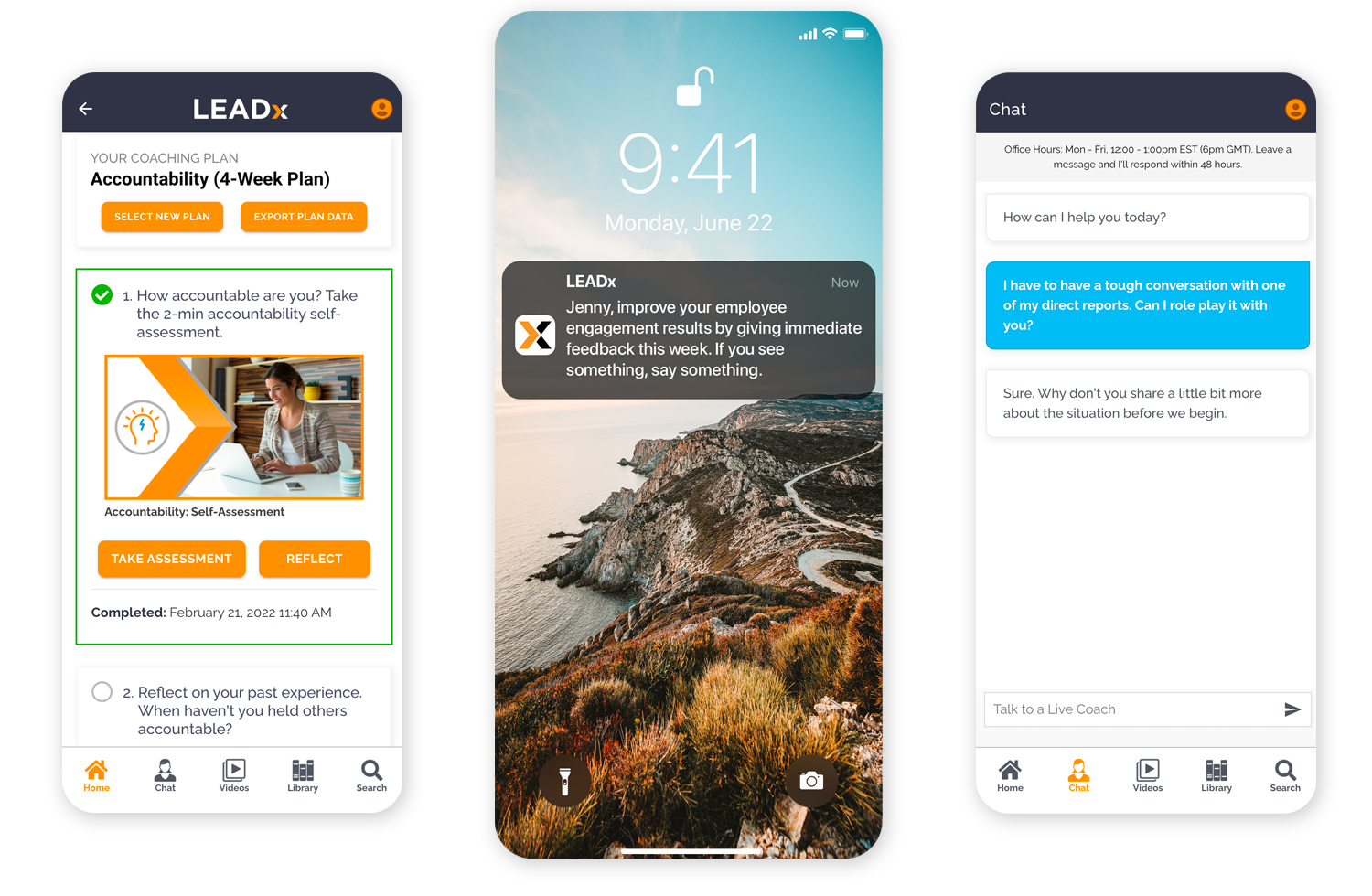
8 of the Best Leadership Assessment Tools to Try in 2022
There’s no shortage of leadership assessments to choose from. There’s also no shortage of pros and cons to each assessment. One is more comprehensive, but takes more time and is more difficult to remember. Another is catchy and memorable, but a bit less accurate./p>
What follows is a breakdown of eight of the most popular assessment tools and how you can use them. We built this list based on our work with clients and our library of interviews with highly successful leadership development professionals.
A Breakdown of 8 of the Best Leadership Assessment Tools
- Big 5 Personality
The most well-studied and validated model of personality is known as the Five-Factor Model of personality or the Big Five. Research in this model actually began in 1936 by Gordon Allport and H.S. Odbert who identified a list of 4,500 adjectives to describe personality. Since then, hundreds of studies with populations around the globe have been conducted, and The Big Five has emerged as a gold standard among personality researchers.
It identifies five major dimensions of personality or super traits. They are openness to experience, conscientiousness, extroversion, agreeableness, and negative emotionality. Each of these super traits has sub-traits that further define it.
Because of the comprehensive and highly accurate nature of this assessment, it is used in some cases to evaluate potential for success in a particular career or position. For example, sales professionals tend to succeed with certain components of personality, so some organizations will evaluate sales candidates for those traits prior to hiring them.
The Big Five offers a very deep dive into leaders’ personalities. Due to how complex and comprehensive it is, the takeaways tend to be less sticky and memorable.
Additional Sources:
- CliftonStrengths Signature Themes
Talent is any recurring pattern of thought, feeling, or behavior that can be productively applied.” —Donald O. Clifton
CliftonStrengths (formerly known as StrengthsFinder) shows leaders their top 5 strengths, how those strengths can be leveraged, and how those strengths come with a few tendencies you should be aware of.
For example, if your strength is Individualization, you find the unique qualities of individual people interesting. You are great at recognizing what makes someone unique and how you should manage or interact with other people based on their differences.
For leaders, CliftonStrengths is a powerful way to lean into what they’re already good at, to understand how to leverage the strengths of those reporting to them, and to understand some of their tendencies that can get in their way. People love to look at their CliftonStrengths because it’s a very positive experience to learn what you’re good at and why you’re good at it.
- The Hogan Dark Side: 11 Personality Traits that Can Derail You
"The secrets of the dark side are readily accessible because they are captured by a person's reputation—other people can tell you about your dark side. What you do with that information is up to you."—Dr. Robert Hogan
The Hogan Dark Side assesses just that: the dark side of your strengths. It looks at the traits you have that are strengths under normal circumstances but can become reputation-damaging flaws when you feel stressed or pressured. These dark side tendencies—when they aren’t controlled—erode trust, loyalty, and employee engagement. For leaders, this is a powerful way to refine their understanding of their strengths and tune more carefully into how they come across to others.
Additional Source:
- The Emotional Intelligence Appraisal
Dr. Travis Bradberry, the author of Emotional Intelligence 2.0 and the Chief People Scientist at LEADx, writes that “Emotional intelligence is the ‘something’ in each of us that is a bit intangible. It affects how we manage behavior, navigate social complexities, and make personal decisions that achieve positive results.” Emotional intelligence helps leaders to be more self-aware and socially aware, and it helps leaders to practice self-care and build stronger relationships.
The best thing about emotional intelligence is that it’s improvable with practice. Dr. Bradberry writes, “As you train your brain by repeatedly practicing new emotionally intelligent behaviors, your brain builds the pathways needed to make them into habits. Before long, you begin responding to your surroundings with emotional intelligence without even having to think about it. And just as your brain reinforces the use of new behaviors, the connections supporting old, destructive behaviors will die off as you learn to limit your use of them.”
As is the case with personality assessments, there’s a vast range of emotional intelligence assessments with varying degrees of comprehensiveness, validity & reliability, and ease of use. We recommend the Emotional Intelligence Appraisal that Dr. Bradberry designed. It’s quick, 28 items, reliable & valid, and comes with a report that includes strategies tailored for improvement. It’s also available as a 360.
Additional Sources:
- Social Styles
“We can increase our chances of success in any endeavor where the people factor is involved...if we can describe and adjust to others’ behaviors.”—Dr. David Merrill
The Social Styles model, developed by psychologists Merrill and Reid, puts people in four quadrants: Analyticals, Drivers, Expressives, and Amiables. Each style has a preferred way of acting, thinking, and making decisions. The Social Styles assessment has a lot of similarities to the HBDI assessment, but it focuses primarily on how your personality influences your SOCIAL style. The Social Styles assessment also focuses on being memorable and applicable.
The Golden Rule says to treat others the way YOU want to be treated. But the SOCIAL STYLE Platinum Rule shows you how to treat others the way THEY want to be treated. For leaders, the social style assessment helps them understand how they tend to interact and connect so they can leverage their natural strengths and manage their areas for improvement.

- Gallup Q12 Engagement
One powerful way to evaluate training needs for your leaders is to roll out a company-wide engagement survey. After all, many of the elements that hold employees back at work are tied to their relationships with their managers.
Gallup’s Q12 engagement survey offers a deep look at how engaged employees are, and in what areas your organization stands to improve.

Additional Source:
- Myers-Briggs
The Myers–Briggs Type Indicator® (MBTI®) is a report of your psychological preferences in how you make decisions and perceive the world around you. The MBTI is based on Carl Jung’s theory that humans experience the world using four basic psychological functions—sensing, intuiting, feeling, and thinking.
Based on where you land on each of the four psychological functions, you’re assigned one of sixteen “personality types.” For example, ISFJ or “The Defender” is one of the most common of the sixteen personality types. Based on a leader’s type, they can learn about certain tendencies, strengths, and weaknesses they have.
Additional Sources:
- DISC
The DISC assessment has been used by over 7 million people around the world, making it the most popular personality profile available. Its popularity is based on its combination of accuracy and simplicity. While there are other personality tests favored by psychologists for their accuracy (like the Five-Factor Model of Personality and the Big 5 Assessment), the average person isn’t able to remember their scores across so many domains. DISC captures your major behaviors in a single letter or letter combination, which is easy to remember, relate to others, and apply on the job.
Additional Sources:
Leadership Assessments on Personality
Most every assessment on this list (aside from emotional intelligence and the Q12) are personality assessments. Generally speaking, personality assessments can be broken into a spectrum of approachability and a spectrum of accuracy. Consider where on that spectrum you want to fall as you train your leaders. The Big 5 is the most accurate, but the least approachable. DISC and Myers-Briggs are less accurate than the Big 5, but more approachable and memorable.
Leadership Self-Assessments and 360 Assessments
Self-assessments are a great way to add reflection and data to your training at low cost. Self-assessments around leadership competencies can give leaders a sense for how they perceive their own behaviors on the job. A good leadership self-assessment can help build leaders’ self-awareness and get them thinking about how they are hitting and missing the mark when it comes to core leadership competencies.
360 assessments tend to ask about the same, or a similar, set of behaviors that a self-assessment asks about. The difference is that everyone around the leader evaluates them too. Direct reports, peers, bosses, and even clients or external partners can evaluate a leader. 360 assessments help build leaders’ self-awareness as they compare how they perceive theirself with how other people perceive them. The blind spots that emerge are invaluable. Leaders also gain insights into how different groups of people perceive them. For instance, a leader’s boss may perceive her performance as strong, but those reporting to her may not feel the same way. 360s also tend to be much more valid and reliable than a self-assessment, since you’re collecting more data and overcoming the bias of only rating yourself.
Additional Sources:
Make the Most of Your Assessments By Sending Leaders Tailored Nudges
Choosing the assessment that best fits your goals with your leaders is important. The good news is that each of these popular assessments is popular for a reason; they work. They inform leaders of important aspects of leadership in an engaging and memorable way.
The next question to ask as you select an assessment is: “How can I ensure the assessment I choose sticks with leaders and helps them develop long-term?” The LEADx software not only includes assessments like DISC and Big 5, but it can also pair specific tips and lessons for how to apply assessment learnings on the job.









